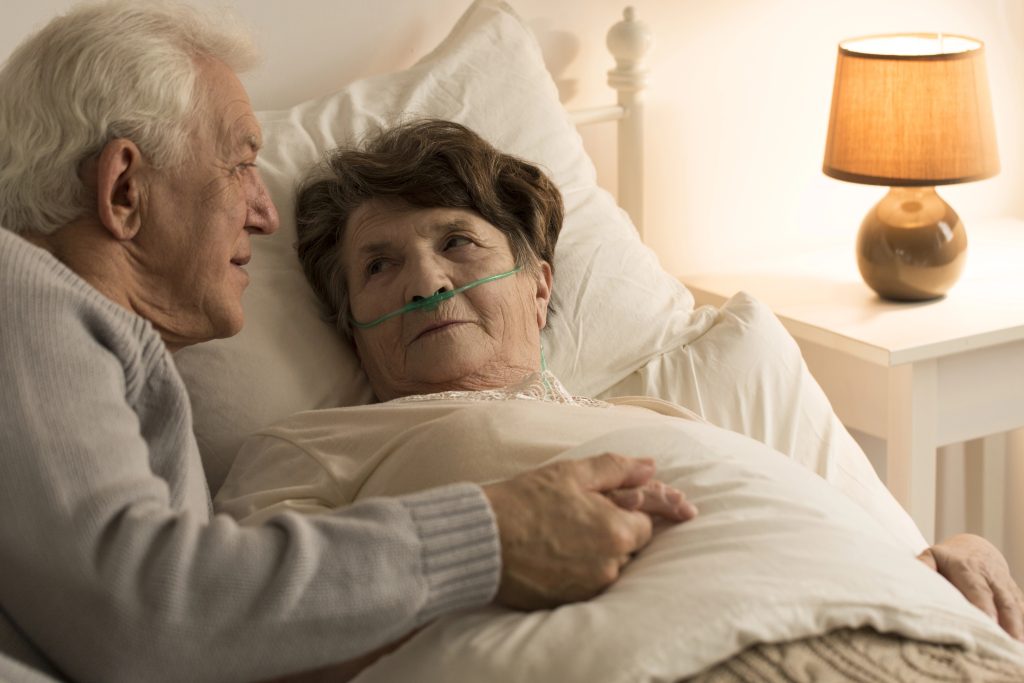 As nurses, we understand that hospice is a peaceful way for patients to transition from this world, but what about our patients’ and families’ perspective?
As nurses, we understand that hospice is a peaceful way for patients to transition from this world, but what about our patients’ and families’ perspective?
I recently had a patient who, over the last few months, had a significant change in her health. She was diagnosed with cancer and ended up with two major surgeries in a three-month time frame. After the second surgery, the patient decided she could no longer endure the pain and wanted a hospice consult. It was not surprising, as she was elderly, but what surprised me was this patient’s perception of hospice. She truly believed we would be euthanizing her the same way we euthanize animals. She was counting down the hours until the hospice nurse would be in the following morning. After the hospice meeting, when the patient found out we would not be euthanizing her, she initially chose to continue medical care. However, after a few more rough days, she ended up choosing hospice care. This made me curious about what our role is in educating patients and loved ones about hospice.
Educating Patients and Families Regarding Hospice
As healthcare professionals, we often see patients who would be better off in hospice or palliative care and wonder why the families prolong the suffering of their loved ones. Yet, as bedside nurses, we rarely broach the topic of hospice. Is it because we are uncomfortable bringing it up? Do we need more resources to inform adequately? Do we assume they already know what hospice can do for the patient, and the family isn’t ready to let go? Do we feel it’s out of our scope of practice, and is it out of our scope when, in reality, it is another way we can advocate for patients? Or is it another task in our overwhelmingly task-oriented job?
It is out of our scope of practice to diagnose our patients or give them test results before the physician relays this information, which means we shouldn’t be the first to mention hospice to our patients. Yet, in the acute hospital setting, this could mean the physician (often a hospitalist) speaking with the family may have never seen this patient before the current hospitalization. This can result in the family perceiving it as the physician not caring or trying hard enough to save their loved one. As nurses, we are with our patients up to twelve hours a day and may care for them for multiple shifts, resulting in the establishment of trust. Should we use this trust to bring understanding to the family about what hospice care truly is? A comfortable transition from this life.
Should Nurses Ask Follow-Up Questions
Nurses are coined the most trusted profession year after year, making us more personable to families and patients and opening us up to challenging conversations, such as how hospice continues patient care with a different end goal rather than just terminating medical care, as some might perceive.
When we have patients with a hospice consult, should we ask follow-up questions even if the family has declined the services? Are they concerned the patient will suffer? If so, we can explain how the hospice team will put the patient on a regimen that works for them, including medications, therapies, and other interventions.
Suppose it is a spiritual fear, and we can bring in clergy members from our services or the patient’s house of worship. At this time, we can try and identify if the family fears they are giving up on the patient. We can explain the harm and pain from continued treatment or the need for ongoing readmission to the hospital.
Is the fear of the family being able to care for the patient after discharge from the hospital leading to the decision? As nurses, we know the burden of caregiving, which is a valid concern. Is the primary support person an elderly spouse? Do the adult children live close, and can they take time away from their work and families to assist?
These questions often arise after the initial hospice consult when family members process such an overwhelming conversation. Should this be the underlying fear, we can contact hospice and ask them to speak with the family regarding insurance coverage, costs, and caregiver assistance. Even if these conversations were touched on at the first meeting, they may need reiterated.
Aging Population
As our population ages and has more health concerns, we must help identify our patients’ and families’ perspectives of hospice and assist them in their next stage of healthcare. With that comes a need for more education on our part, as well as the ability to speak comfortably with others regarding end-of-life.
We must educate ourselves and learn to comfortably discuss end-of-life matters with others. We could pursue additional education credits independently or incorporate this topic into our annual mandatory workplace training. It could also be added to our compulsory continuing education as has been done with pain and human trafficking. What are other ways we as a profession can improve during end-of-life care discussions?
Guest Post by Melissa Murphy RN
With over fifteen years of nursing experience ranging from post-partum to hospice one of the best parts of nursing is mentoring the new nurses and helping them build a solid foundation in their journey.
